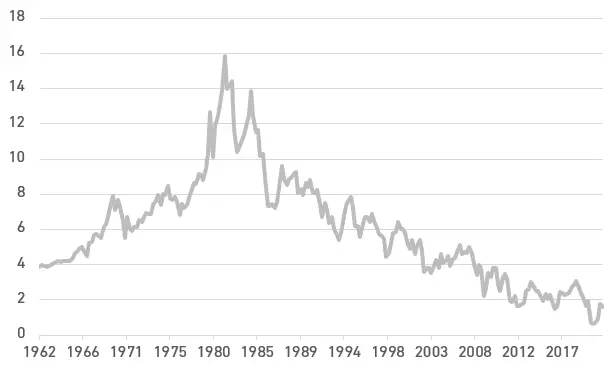
Why we always have an eye on interest rates
We’ve been pretty clear on what we think of interest rates and bonds. In short, we don’t like bonds that much. Interest rates are low, which reduces bonds ability to offer great protection against equity risk, as well as lowering the available return.
So, what are we doing about it?
Well firstly, we’ve put a large chunk of our bond allocation into alternatives – and we’ve written about it a lot. But this article isn’t about alternatives… it’s about what we do with the rest of our bonds.
In lower risk profiles, we still have allocations to bonds. So, we’ve had to apply a lot of thought about how to make the most out of our remaining bond allocation. And, as long as you choose wisely, bonds still have a place in portfolios – you just have to think outside the box a little:
1. Recent increases in bond yields aren’t the end of the story
Earlier this year, there was a lot of talk about yields and interest rates rising, but context is extremely important.
10-year treasury yields are a great barometer of what investors are thinking and of the global interest rate environment. In August 2020, they plunged to 234-year lows of 0.52%. Fast forward to March 2021, and markets were getting flustered by these yields rising above 1.7%. So, yields did rise, but how do these levels compare to history?
Figure 1: US 10-year treasury bond yields

Source: Bloomberg Finance LP
Figure 1 shows US 10-year treasury yields since 1962. It’s clear that a figure of 1.7% is historically low, very low, in fact. It was only 20 years ago when treasury yields well above 5% were the norm.
2. Why do low yields matter?
Bonds have historically been used to temper the risk that comes with holding equities in a portfolio, and this has historically worked. When there is a lack of confidence in equity markets, people tend to move to bond markets. So, equity indices fall and demand for bonds and hence their price rises.
Low yields make it harder for bonds to offer this kind of protection. For bond prices to rise on a stormy day for equities, their yield needs to fall. But, since most bond yields are already very low, there may come a point where yields can’t fall further… you’d be as well-off stuffing your mattress with cash instead of buying bonds.
Central banks have been testing where that “lower bound” is since the crisis, and have shown that in the short term, rates can turn negative without investors abandoning bonds. But there is increasingly a sense that this experiment can’t last – eventually, investors will demand a positive return on their assets.
3. So, why do we still hold bonds?
Not all bonds were born equal.
If you spend some time looking around, you’ll find some bonds that actually have reasonable yields and can offer more than reasonable protection against equity markets.
4. What bonds do we hold?
- US mortgage backed securities over corporate bonds
We think these bonds – secured against a large pool of residential mortgages, usually grouping together hundreds or thousands of homes – are a better choice than regular corporate bonds. Although the credit risk is roughly similar, we get paid twice as much in yield. Part of the reason for this higher yield is the bad reputation these securities acquired during the global financial crisis, but the market has changed considerably in the last decade.
- European bank bonds over corporate bonds
A similar hangover from the global financial crisis can be seen in European bank bonds. After a decade of regulatory scrutiny and stress tests, banks are more secure than ever before. Furthermore, European banks are coming out of the COVID-crisis stronger than when they came in. Despite this, their debt is still priced like they’re about to collapse, and here lies the opportunity.
- Asian high yield over global high yield
Compared to sub-investment grade bonds across other parts of the world, Asian securities tend to have higher yields by around 3%. And yet again, we think that this is people mispricing the risk, given there is a lot of access to liquid domestic financing. Half of Asian high yield is exposed to Chinese property companies. A large part of the Chinese economy is reliant on the property market staying buoyant (much like the UK!) so we think that there’s a very low chance of a systemic collapse.
So, even though we don’t like bonds that much, we do think there are still opportunities in this space, and we will continue to explore these opportunities as we move into what will be an interesting period for markets in general.
As long as you choose wisely, bonds still have a place in portfolios – you just have to think outside the box a little.
Discover more




